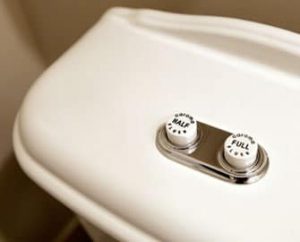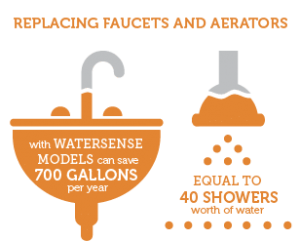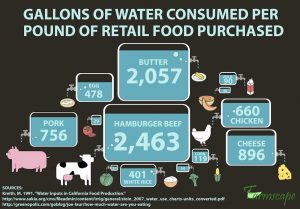A New Year’s Resolution That Has a Big Impact and is Easy to Keep: Save Water!
 While many New Year’s resolutions include renewing that old gym membership or cleaning out the garage, a great way to start the new year off right is to focus on conserving water. With severe drought across the country, including New England, water is becoming ever more valuable and people are looking for ways to get the most out of every drop. One of the easiest steps we can take to help mitigate the impacts of drought is conserving water. Unlike most New Year’s resolutions, making a few simple changes to save water is an easy resolution to stick to and it makes a significant difference in the world. Let’s look at a few simple ways you and your community can conserve water.
While many New Year’s resolutions include renewing that old gym membership or cleaning out the garage, a great way to start the new year off right is to focus on conserving water. With severe drought across the country, including New England, water is becoming ever more valuable and people are looking for ways to get the most out of every drop. One of the easiest steps we can take to help mitigate the impacts of drought is conserving water. Unlike most New Year’s resolutions, making a few simple changes to save water is an easy resolution to stick to and it makes a significant difference in the world. Let’s look at a few simple ways you and your community can conserve water.
Ditch Those Old Appliances

The average person in the United States uses about 80-100 gallons of water each day. Of that amount, almost all of it comes from appliances such as washing machines, dishwashers, toilets, and faucets. Toilets alone account for approximately 27% of the water consumed in your home and many older toilets use up to seven gallons of water per flush. Installing a high-efficiency toilet that uses less than 2 gallons per flush can save up to 18,000 gallons of water a year – about $120 off your water bill annually. And if you really want to go green, and are brave to boot – consider one of these alternative toilets!
Washing machines offer another opportunity to save water year-round. Washing machines, on average, account for around 20% of a household’s water use, and switching to a high-efficiency washing machine can cut that water consumption in half. If one in ten American households were to install high-efficiency appliances, we would save 74 billion gallons of water per year as a nation. That’s an annual savings of about $1.5 billion dollars on utility bills. These appliances may have a higher upfront cost, but when you save 30-75 percent of your water bill each month, these investments quickly pay for themselves.

For a more affordable option, updating fixtures such as showerheads and faucets around the house can significantly reduce the amount of water you use. Conventional showerheads use as much as 10 gallons of water per minute. Modern showerheads use just 2-3 gallons per minute, which saves water and minimizes the stress on your water heater. Also, installing faucet aerators can help regulate water pressure to create varying flow rates to use less water depending on the task at hand, saving thousands of gallons annually. Updating your appliances and faucets is the most cost effective solution when it comes to saving water. Combined with simple lifestyle changes, these innovative technologies enable us to save significant amounts of water.
Small Leaks, Big Problems
Although it may look insignificant, a lightly dripping faucet can waste over 20 gallons of water per day. Toilet leaks are another major problem that often go undetected. To check if a toilet might be leaking, place a “toilet dye” tablet in the toilet tank and closely monitor the toilet bowl. If, without flushing, the water in the bowl changes color within half an hour, the toilet has a leak that needs to be repaired. Another way to determine if there is a water leak in your home is to read your house water meter before and after an extended period when no water is being used, like when the family is away on vacation. If the meter does not stay the same, then you have a leak somewhere in your home.
Manage the Meat

Our favorite steak or burger may taste great, but it takes a lot of water to reach the dinner plate. A pound of beef requires almost 2,500 gallons of water to produce. By avoiding beef for just one day a week, we can save thousands of gallons of water each year. In fact, we would save more water by not eating one pound of beef than we would by not showering for six months. We can save even more by cutting out other foods that require a lot of water to produce such as almonds (1,929 gal/lb.), chocolate (2,061 gal/lb.), pork (1630 gal/lb.), and butter (2,044 gal/lb.). When we do eat beef or other water intensive foods, we should choose pasture raised because grass is less likely to require irrigation compared to corn or soy used in the conventional method of raising livestock. Even cutting out that one extra cup of coffee each day can save hundreds of gallons of water. Being conscious of what we eat is not only good for our health, but also the environment.
To Wrap It Up
When it comes to daily water usage, even the smallest action to save water is significant to combat our country’s severe drought. Paying attention to how you and your family use water in your home will help you come up with the best ways in which your family can make simple changes that can have a big impact. For your New Year’s resolution, think of one thing each day that will save water – even small ideas can add up to big savings, for both our wallet and our planet.
